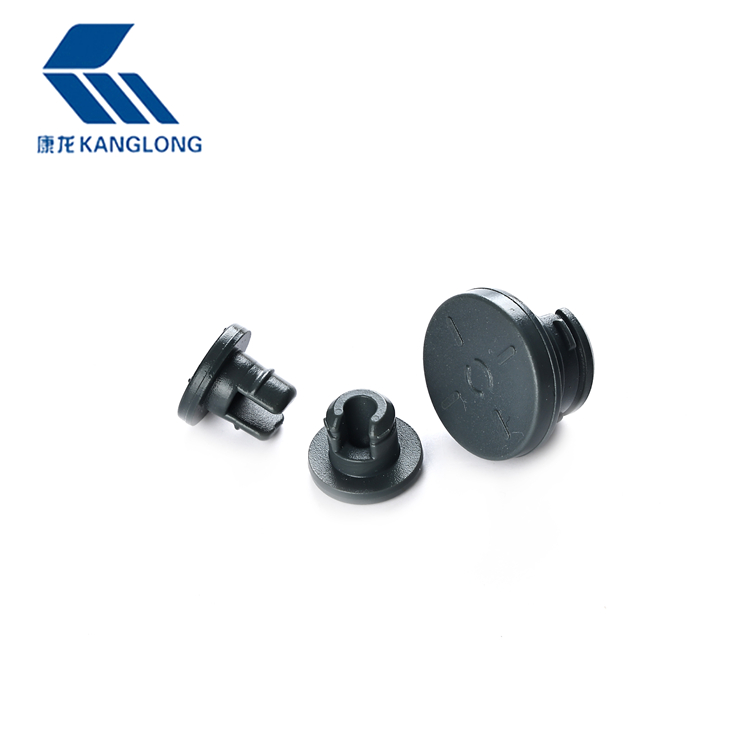Vacutainer rubber stoppers are vital components in medical testing and diagnostics, primarily used in blood collection tubes, vials, and other containers for safe sample storage. These stoppers maintain the integrity of samples, prevent contamination, and create a secure seal to ensure accurate results. The raw materials used in the production of these stoppers are selected for their durability, chemical resistance, and ability to maintain sterility. Understanding how these raw materials are obtained is essential for appreciating the quality, performance, and reliability of the final product.

Vacutainer rubber stoppers are primarily made from synthetic rubber materials, commonly butyl rubber, natural rubber, and EPDM (Ethylene Propylene Diene Monomer) rubber. Each type of rubber offers different qualities suited to specific applications in medical and pharmaceutical packaging.
Butyl Rubber: Butyl rubber is one of the widely used materials for vacutainer stoppers due to its sealing properties and resistance to gases and moisture. It also offers minimal reactivity, which is crucial for maintaining the sterility and stability of blood and other biological samples.
Natural Rubber: Though less commonly used in medical applications compared to synthetic rubbers, natural rubber can still be found in some vacutainer stoppers. It is derived from latex extracted from rubber trees and has elasticity and flexibility, though it is more prone to chemical reactions than butyl rubber.
EPDM Rubber: EPDM is a synthetic rubber that is known for its high resistance to weathering, ozone, and aging, making it suitable for long-term storage of samples. Its chemical resistance is another reason it is sometimes used in rubber stopper manufacturing.
The process of obtaining the raw materials for vacutainer rubber stoppers involves a range of suppliers, often from specialized chemical companies, rubber producers, and agricultural sources. Below are the methods of sourcing and obtaining the materials for each type of rubber:
Butyl Rubber: Butyl rubber is a synthetic polymer derived from petrochemical processes. The primary feedstocks for butyl rubber production are isobutylene and isoprene. Isobutylene is sourced from natural gas or petroleum, while isoprene is often a byproduct of the refining process. The polymerization of these compounds results in the production of butyl rubber, which is then processed and purified to meet the strict specifications for medical-grade use.
The production of butyl rubber typically occurs in large-scale industrial plants, with major suppliers operating in regions with access to oil and gas reserves. The raw materials are carefully sourced from petrochemical refineries that specialize in the production of polymers and elastomers.
Natural Rubber: Natural rubber is harvested from the latex of rubber trees (Hevea brasiliensis), primarily found in Southeast Asia, Africa, and South America. The latex is collected by tapping the trees, which involves making an incision in the bark and collecting the milky fluid that is exuded. The latex is then processed through coagulation, washing, and drying to form sheets or blocks that can be used in the manufacturing of rubber products.
The production of natural rubber is an agricultural process that requires skilled labor for tapping and processing. As the demand for rubber in various industries grows, sustainable farming practices are increasingly emphasized to ensure responsible harvesting and environmental stewardship.
EPDM Rubber: EPDM is a synthetic elastomer produced by the polymerization of ethylene, propylene, and a small amount of diene monomer. The primary feedstocks for EPDM production are ethylene and propylene, which are derived from petroleum and natural gas. These hydrocarbons undergo chemical reactions in a polymerization process to form EPDM rubber, which is then compounded with other materials to create the desired characteristics for specific applications.
EPDM production is highly reliant on the chemical industry and petrochemical companies that specialize in ethylene and propylene production. The sourcing of these raw materials typically involves large-scale manufacturing facilities that ensure a constant supply of high-quality EPDM rubber.


 English
English Español
Español


.jpg?imageView2/2/w/500/h/500/format/jpg/q/100)






